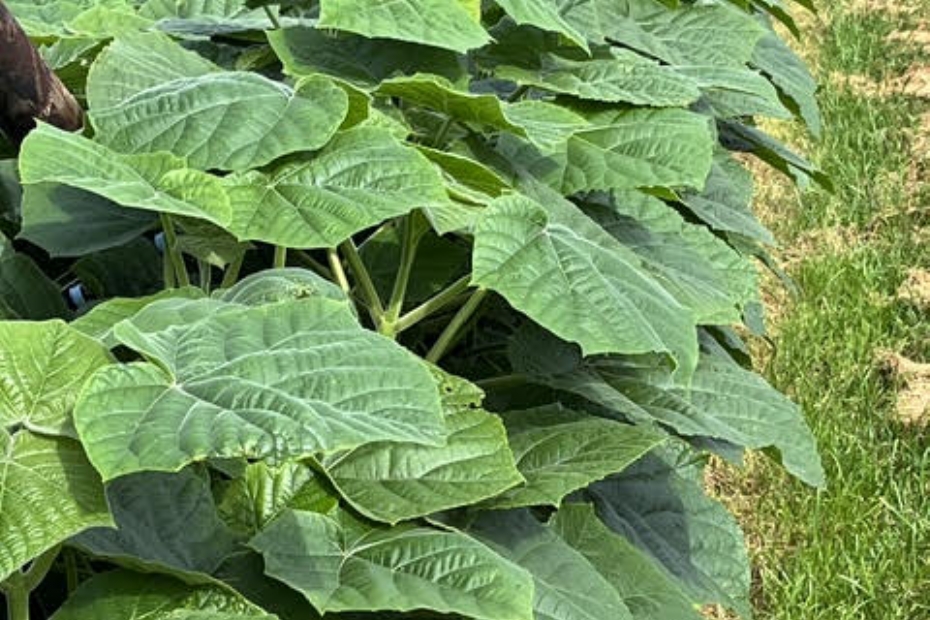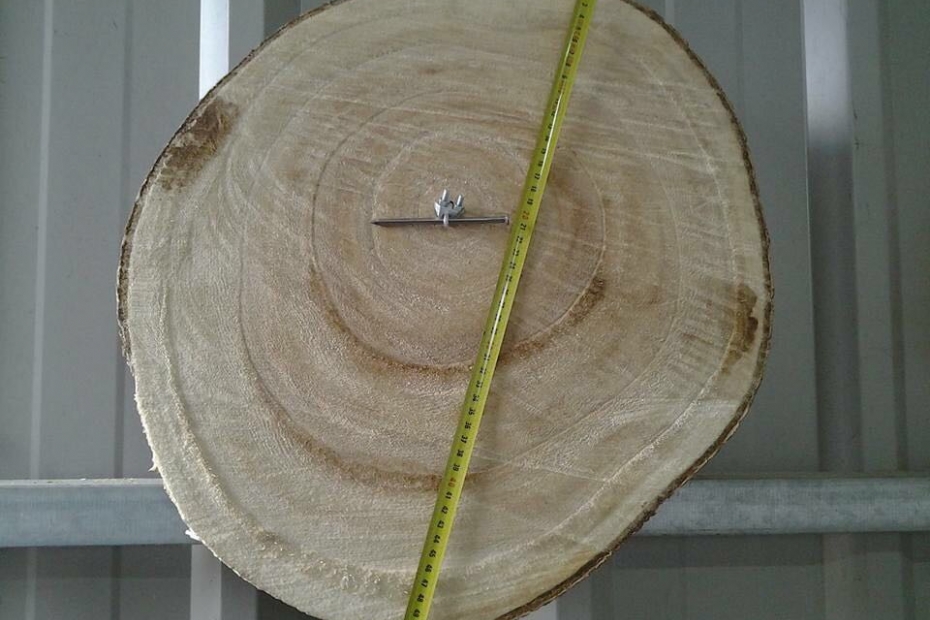CO2-Tree goes (inter)national with Paulownia trees |
|
|
|
|
 |
| 171 sec |
New company unites forces to strengthen CO2 reduction
After several successful trials, André Boereboom (Boereboom Invitro Cultures) cautiously launched his first homegrown Paulownia trees. Things have taken off since, as he joined forces with two other partners to take a step toward a greener world through CO2-Tree. The attractive business model of CO2-Tree—aimed at generating carbon credits and producing wood and biomass—is now being expanded. Landowners, businesses, and governments alike can benefit. Boereboom explains the how and why of CO2-Tree.
| Paulownia has an exceptionally high CO₂ absorption |
André Boereboom (Boereboom Invitro Cultures) is raising the profile of the Paulownia tree. The Paulownia absorbs much more CO₂ than average trees due to its accelerated photosynthesis process. The tree also supports biodiversity and produces strong yet lightweight wood. Combined with disease-free and uniform growth, this results in what Boereboom calls a highly powerful and sustainable product. He aims to amplify the impact of the Paulownia through the unique expertise brought together in the new company CO2-Tree. Together, they see Paulownia as the key to a greener future.
Paulownia goes global
Boereboom established CO2-Tree with two partners to harness the power of Paulownia together. Alongside Boereboom, Alexander van Oploo (Van Oploo Tuinplanten) and Ronald Laman are also involved. "Alexander has extensive cultivation knowledge and a broad network. He was a long-time client of ours when we ran a cutting company. Ronald is the founder of Breederplants, a company specializing in royalty management. He introduces and legally protects new cultivars and has a global network—which is essential for CO2-Tree. Paulownia is highly suitable for both local and global markets."
Boereboom believes this goal can't be achieved alone, which is why he sought collaboration. "You need partners to brainstorm and generate ideas. A broad network is essential for international expansion. We've united three complementary parties, and by creating a dedicated business entity, we ensure a stronger and more distinctive identity."
 | | Paulownia cultivation generates many carbon credits |
|
|
Full-service concept
CO2-Tree offers a complete solution. Boereboom Invitro Cultures produces and multiplies the plants. Van Oploo Tuinplanten handles the young plant production, while Ronald Laman provides additional services and expertise.
"We target two customer groups," Boereboom explains. "The first group includes landowners, such as farmers, who can plant the trees on their land to earn carbon credits and produce biomass or timber.
The second group consists of public authorities, like municipalities, and companies. These entities often need to offset excessive CO₂ emissions, either by paying a levy or by purchasing carbon credits. We connect them with landowners who plant Paulownia trees. These landowners can then supply the credits to the organizations. Our model goes beyond tree sales—we support the entire cycle: from production and services to a connected network where all parties benefit."
|
|
"We manage the full process—from tissue culture to the plant in the pot"
| |
|
Full control over the process
Thanks to the collaboration among the three partners, CO2-Tree manages the entire Paulownia tree production chain. "We handle the full process—from tissue culture to the plant in the pot. The tissue culture takes place in our Eindhoven lab, after which the plants go to Boereboom Invitro Cultures' Portuguese facility for multiplication. We have ample capacity for growth there. Boereboom acts as the main supplier for CO2-Tree."
CO2-Tree cultivates three Paulownia varieties, including Paulownia elongata 'Futuro'. Boereboom: "This one is our own cultivar. The second, 'Shan-Tong', was previously propagated only by cuttings. We've now selected and reproduced it via tissue culture in the lab. The third, 'Smaragdfa', is a variety acquired through a Hungarian professor and is licensed exclusively for the Benelux."
The Paulownia is protected under plant breeders' rights, which Ronald Laman of Breederplants VOF oversees. Through licensing contracts and monitoring distribution channels, illegal propagation is prevented in Europe. Additionally, license fees are collected, and plant quality is monitored.
Boereboom further explains the business models: "One revenue stream is carbon credit generation. For this, we partner with ONCRA, which calculates CO₂ storage and handles carbon credit certification. Once the trees are planted, we assist in receiving credits. Some are granted immediately. If you grow for timber—an 8 to 10-year process in the Netherlands—CO₂ storage in the root, soil, and tree is measured before harvesting. This results in hundreds of additional carbon credits."
Over 500,000 Paulownia trees
Boereboom continues: "If you focus on timber production, you not only yield wood after eight to ten years, but also earn hundreds of carbon credits. These are measured in the field before harvest. So, you benefit from both carbon credit income and timber sales. The wood can be used in biobased construction, which is becoming increasingly important. Paulownia is one of the lightest wood species, with a density of just 265 kg per cubic meter. It's sometimes referred to as the 'aluminum' of wood types. It's a sustainable and stable material suitable for things like acoustic panels."
 | | Paulownia wood is ideal for biobased construction |
|
|
CO2-Tree aims to plant over 500,000 trees by 2025, ultimately for biomass or timber production. "For biomass, you plant 2,000 to 3,000 trees per hectare, depending on spacing. Every two years, the trees are cut and chipped, and the remaining carbon credits are measured. The resulting biomass is used for fiberboard, insulation, and mushroom cultivation, with promising trials already underway."
This article was originally published on December 27, 2024, on the website of Stad + Groen.
| Boereboom Invitro Culture... | |
| |
| LOG IN
with your email address to respond.
|
|
|
| There are no comments yet. |
|